For “Travel Tuesday”, Let’s visit Fort Griffin in the Texas Panhandle Plains region of TX:
 “The Texas Panhandle Plains region offers visitors a wide variety of experiences from the breathtakingly beautiful canyon lands, to the Old West heritage that is still evident today. You can visit the birthplace of Buddy Holly and many other famous artists, explore a wide variety of museums & exhibits, or simply enjoy the wide open skies that have attracted visitors for generations. Discover the adventure of the Texas Panhandle Plains.”
“The Texas Panhandle Plains region offers visitors a wide variety of experiences from the breathtakingly beautiful canyon lands, to the Old West heritage that is still evident today. You can visit the birthplace of Buddy Holly and many other famous artists, explore a wide variety of museums & exhibits, or simply enjoy the wide open skies that have attracted visitors for generations. Discover the adventure of the Texas Panhandle Plains.”
FORT GRIFFIN, TX
“Though there is little left of old fort, and even less of the settlement that formed below the bluff, Fort Griffin was one of the wildest places in all of the Old West. Built on the rolling hills between the West Fork of the Trinity River and Clear Fork of the Brazos River, the area was a dangerous place as settlers made their way into Texas, conflicting with the Plains Indians who had long called the area their exclusive hunting grounds. Though Forts Belknap, Phantom Hill and Camp Cooper had already been built in the 1840’s, they were not enough to protect new settlers. However, the Civil War interrupted any additional fort building until it was over. Then, afterwards, the government began to build forts once again, including Forts Griffin and Richardson.
Work began on Fort Griffin in 1867 when Lieutenant Colonel Samuel arrived with four companies of the Sixth Cavalry on July 31st. The outpost, first designated as Camp Wilson. The name was changed to Fort Griffin in honor of Gen. Charles Griffin, the commander of the Department of Texas, who had originally made the plans for building the new fort. Gen. Charles Griffin had died of yellow fever the previous September in an epidemic sweeping Galveston. It was built upon a hill overlooking the Clear Fork of the Brazos River.
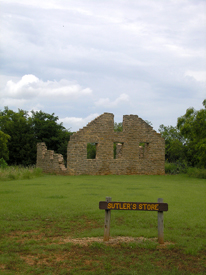 By the time it was finally complete, the fort would accommodate up to six companies of soldiers and included an administration building, a hospital, officers' quarters in eleven buildings, numerous barracks, a guardhouse, a bakery, a powder magazine, five storehouses, forage houses, four stables, a laundry, and a workshop.
By the time it was finally complete, the fort would accommodate up to six companies of soldiers and included an administration building, a hospital, officers' quarters in eleven buildings, numerous barracks, a guardhouse, a bakery, a powder magazine, five storehouses, forage houses, four stables, a laundry, and a workshop.
Almost immediately after the fort was completed, a new settlement began at the bottom of the hill, first called "The Bottom,” "The Flat” or "Hidetown,” before it took on the name of the fort. In addition to the honest pioneers who settled the area for legitimate reasons of ranching, agriculture, and commerce, in flooded a number of ruffians and outlaws.
When more and more people continued to arrive, the Indian attacks increased across northern Texas, keeping the soldiers busy in what was called the Red River Campaign, the battles of which continued until 1874, when the Texas Army defeated the Kiowas and Comanches at Palo Duro Canyon.
In the meantime, the settlement below the hill was bustling with buffalo hunters, business men, cowboys, outlaws, gamblers, gunfighters, and "painted ladies,” quickly gaining a reputation for lawlessness.
![images[10] images[10]](https://blogger.googleusercontent.com/img/b/R29vZ2xl/AVvXsEja2Fv1P-Bh_eZYIoz-g-pJmSaat_3cfPtEIdMMeXEQmF4Yymo9NE47Y2evijUe_roOQoLBYfMYSNtPTeuel29tJYn7oy_3ehGBzI7YXufay-uHlnvsCpysVqE5Ba-VV5PpCsFAUUEfKu03/?imgmax=800)
"Marshaling” the lawless town was outlaw/lawman John M. Larn as sheriff, and his deputy, John Selman who, in the mid 1870’s, were working both sides of the law by controlling the vigilantes and rustling cattle. John Larn; however, would be killed by those same vigilantes inside his own jail in Fort Griffin. Selman, on the other hand, quickly disappeared and almost two decades later would kill John Wesley Hardin. During these lawless times, the settlement was so decadent that it was labeled "Babylon on the Brazos.”
It was at Shaunissy's Saloon in Fort Griffin that Wyatt Earp first met Doc Holliday. Today, the saloon has been recreated on top of its old foundation.
In fact, in 1874, the place was so bad that the commander of the fort placed the town under its control, declaring martial law and forcing many of the undesirable residents to leave. The town remained under the army’s control until Shackelford County was officially formed later in the year.
When the fort was built and the town below it sprang up, it was part of Jack County. However, at the same time that the town was boasting its bawdy ways in the extreme, there were also a number of law abiding citizens in the area that wanted to form a new county. Early in 1874, they petitioned the Jack County Court for permission to form their own county. In September, permission was granted and the new county was called Shackelford in honor of Dr. Jack Shackelford, a Texas revolutionary hero. Fort Griffin became the temporary county seat on October 12, 1874.
But those law abiding citizens weren’t satisfied with having Fort Griffin, with its immoral reputation, as their county seat. They quickly gathered together and proposed a brand new town in the center of the county to serve as the permanent county seat. On November 8, 1874, area residents voted to establish the new town of Albany to serve the people of the new county.
Buffalo Hunters by P.H. Kellogg
However, by the late 1870’s the buffalo on the plains were beginning to dwindle, reducing the many buffalo hunters that called the Fort Griffin home. Vital to the town’s economy, businesses began to suffer and soon packed up and moved to the new town of Albany.
In 1881, two events would spell the final death blows for the town of Fort Griffin. By this time, the Indians of the area had been pushed westward or placed on reservations and the soldiers of the fort were no longer needed. After 14 years of guarding the area population, the U.S. flag at the fort was lowered for the last time on May 31st.
That same year, the Texas Central Railroad was pushing through the region and Fort Griffin was working desperately to entice them through their city. However, the citizens of nearby Albany raised $50,000 to lure them through their town.
The small town survived for several years, gradually diminishing in size. By the 1940’s the school was consolidated with Albany’s and a short time later the post office closed.
Although it survived into the twentieth century as a rural community with a school and country store, virtually nothing remains of this once riotous, flourishing town.
Today, there are only a couple of original buildings left at the town site, but several "new” ones have been reconstructed over original foundations. What’s left of this once thriving town is situated on the Collins Creek Ranch, a wildlife habitat, working ranch, and commercial hunting property. Though privately owned, its owners do allow visitors on the property to view what’s left of this once lawless place.
The site is open daily year-round. Fort Griffin is located on the Texas Forts Trail on U. S. Highway 283, about 15 miles northeast of Albany, Texas.” More at: http://www.legendsofamerica.com/tx-fortgriffin.html
--------
Brief History of Fort Griffin.
“Although the original intention was for all buildings on the grounds to be permanent stone structures, they retained a temporary appearance throughout their existence. In the beginning, log houses called “picket” huts (built with vertical logs), tents and rough frame buildings with earth and canvas roofs were erected as provisional shelter. The scarcity of materials, shortage of funds and daily demands of military duty allowed for only six of the more than 90 structures of the garrison to be built wholly of stone.
Although Fort Griffin was known on the frontier to be a very tidy, disciplined place, it was an especially active fort and the troops were kept busy with protection and settlement of the frontier with little time for building construction or maintenance.
Reconstructed barracks huts
Ruins of the fort sutler's store
The historic Fort Griffin Mess Hall has been recreated.
The historic Fort Griffin Baker building has been restored.
Ruins of the fort’s administration building
Saloon and Jail
Photo courtesy Barclay Gibson, February 2008
Fort Griffin State Historic Site, a Texas Historical Commission property, is located in the northeastern portion of Shackelford County, approximately 14 miles north of Albany, Texas. Open to the public since 1938, the site offers recreational opportunities for history buffs, outdoor enthusiasts, astronomers and families.
Set in the unspoiled natural environment of West Texas, Fort Griffin held command over the southern plains, as one in a line of frontier defensive forts from 1867 to 1881. Among the ruins today are a mess hall, barracks, first sergeant’s quarters, bakery, powder magazine and hand-dug well.
The site also includes a portion of the official Texas Longhorn herd, scenic campgrounds, nature trails and some of the biggest skies in Texas. Rock foundations, ruins and a few reconstructed buildings serve as a reminder of a once prominent 1800s fort.
The campgrounds, located on the banks of the Clear Fork of the Brazos River, provide visitors with an opportunity to relax under large shade trees, enjoy the playground, catch catfish in the river or hike nature trails connected to the campground.
Due to the vast ranches surrounding the property, Fort Griffin has minimal light pollution. The result is an astronomer’s oasis with great skies for viewing constellations, planets and galaxies at Fort Griffin’s monthly stargazing events.
Fort Griffin is a State Archeological Landmark and the post is listed in the National Register of Historic Places.”
________
http://www.ghosttowns.com/states/tx/fortgriffen.html
_______
Guided Fort Tour
“Dates: 5/11/2013 - 9/7/2013 9:00 AM
Cost: $3 plus general admission, Location: Fort Griffin Visitors Center, 1701 N. US Hwy 283 Albany, Texas 76430
Get a taste of the Wild West!
Let us take you on a tour of the military fort one Saturday morning a month, as we share stories of outlaws, legends, and heroes from Fort Griffin and the Clear Fork country.
Scheduled program dates are as follows:
- May 11
- June 8
- July 6
- August 3
- September 7
Tours will begin at 9 a.m. and will last about an hour and a half. Golf carts are available for those who have limited mobility.
Please check the calendar or call ahead (325.762.3592) prior to arrival for possible cancellations.”
_______
Stars & Skies of Texas
“Monthly Star Gazing Party Dates: 7/6/2013 8:30 PM, 8/3/2013 8:30 PM 9/7/2013 8:00 PM. Cost: General Admission. Location: Campground, Fort Griffin State Historic Site Albany, Texas 76430
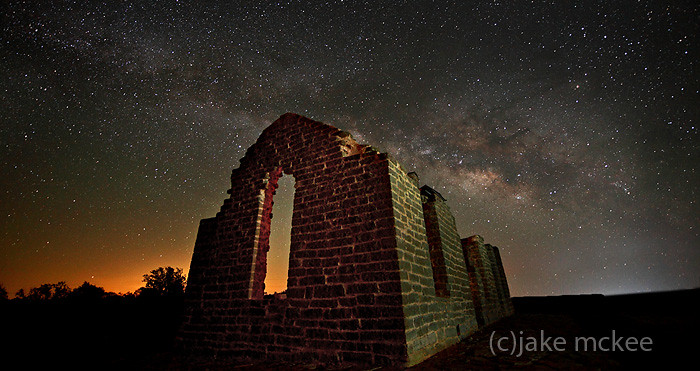
In this photo you can see the milky way.
Join us for an out of this world star party at Fort Griffin! Local astronomers will bring large telescopes along with their knowledge of the night skies to share with anyone eager to learn and be amazed. Attendees will have the opportunity to view many different objects found in the night skies. Great for the entire family!
For specific questions about this event, please give us a call at 325.762.3592.”
_______
Guided Nature Hike
“Dates: 5/25/2013 - 9/21/2013 9:00 AM
Cost: General Admission, Location: Visitors Center Fort Griffin State Historic Site Albany, Texas
Join us on a guided nature hike one Saturday morning a month throughout the summer to explore the local flora, fauna, and natural history of the Clear Fork region. It will be both a fun and educational opportunity for all ages.
Scheduled program dates are as follows:
- May 25
- June 22
- July 20
- August 17
- September 21
Hikes begin at 9 a.m. and last about an hour and a half to two hours. Be prepared to hike in rugged areas off the main hiking trails, where there may be taller vegetation, rocks, logs, snakes, and other potential hazards.
Please check the calendar or call ahead (325.762.3592) prior to arrival for possible cancellations.”
_______
Fort Griffin Fandangle

Welcome to the Fort Griffin Fandangle
“Come to help us Celebrate 75 Exciting years spent telling the Northwestern Texas Frontier Story. Relive the days of the Indians who roamed the prairie, the Settlers who moved ever west with their herds of Longhorns, the Military who protected them all, and the Civilization they created.
Fandangle is Texas Oldest Outdoor Musical/Dramatic Show. Presented in a large Prairie Theater with covered wagons, buggies, and a replica of the first Texas Central Train, there are galloping prairie fires, oversized rattlesnake, frontier town, and first oil discovery. 300 Albany performers authentically present the look and feel of the Old West told with fun and humor.
The Fandangle is performed every year on Thursday, Friday and Saturday of the last two weekends in June.
For 2013 the dates are June 20, 21, and 22 and June 27, 28 and 29. Call 325-762-3838 or click here for more information and to purchase your tickets.”
-------

Fandangle History
 “The Fort Griffin Fandangle is an outdoor production evolved from a 1938 Senior High School play called “Dr. Shackelford’s Paradise” written and directed by Robert Nail, Jr., an Albany, Texas, native and Phi Beta Kappa Graduate of Princeton University. An immediate popular response caused the play to be renamed, enlarged, and produced as a community undertaking that same year. With the help of his childhood friend, artist and musician Alice Reynolds, a graduate of Baylor University, the show became entertainment of a quality and style never seen before in West Texas.
“The Fort Griffin Fandangle is an outdoor production evolved from a 1938 Senior High School play called “Dr. Shackelford’s Paradise” written and directed by Robert Nail, Jr., an Albany, Texas, native and Phi Beta Kappa Graduate of Princeton University. An immediate popular response caused the play to be renamed, enlarged, and produced as a community undertaking that same year. With the help of his childhood friend, artist and musician Alice Reynolds, a graduate of Baylor University, the show became entertainment of a quality and style never seen before in West Texas.
The big musical production is still directed and produced by the people of Albany in its own Prairie Theater 75 years after its creation and has been acclaimed a professional-caliber show by theater critics. It is staged in an acre-sized amphitheater by over 300 citizens.
It is this history the Fandangle continues to relive through music– most of it original,– dancing, narration carrying the story line, and lots of action using wagons and horses, a stagecoach, and citizens of Albany as gamblers, can-can girls, settlers, Indians, soldiers, buffalo hunters, and real life cowboys. Every Fandangle is different, however, according to Director Betsy Parsons’ story line.
Beginning at dusk, on each of the last two weekends in June–Thursday, Friday, and Saturday– a total of 10,000 people literally from across the nation and around the world come for Fandangle season, some return year after year to refresh memories and enjoy the surprises and fun. It’s a proud history only the people of Albany can claim, and first time visitors often are amazed at the size and scope of the Fort Griffin Fandangle.”
______
About Shackelford County
“Sixteen miles north of the Shackelford County Courthouse a thin band of water, the Clear Fork of the Brazos River running along the northern county boundary, cuts through the dry prairie. Although a scarcity of fresh water is common, the Clear Fork was responsible not only for the Native American presence of Athabascan Apaches and the Comanches who later supplanted them, but also for bringing settlers here and transforming the country into prime ranch land.
Documentation suggests that even prehistoric man appreciated the wide abundance of wildlife. Rumors of Spanish artifacts have not been documented to the extent that we can say with certainty that early Spanish explorers came through the county area. If they didn’t, they missed a special region of Northwest Texas.
The army abandoned Fort Griffin and Griffin melted away while Albany slowly took root. The Texas Central Railroad arrived and with it the birth of a new county town, Hulltown, which later was renamed Moran, 15 miles to the southeast. A native limestone courthouse designed by James Flanders of Dallas replaced the rickety picket structure in 1883.
Shackelford County endured a severe drought in 1886-87, and with help from a local Presbyterian minister, John Brown, brought Clara Barton, (she was the founder of the American Red Cross), to Texas for the first time using Albany as her headquarters. She came to check on the suffering and lack of resources for small farming families who had been lured to the area in large numbers by zealous railroad promoters and newspaper editors.
Albany endured the droughts and remained a ranching and farming center until 1910, when the oil man arrived and discovered the first commercial gas well in this vast area of West Texas near Moran. Successful exploration continued with the shallow but prolific Cook Field in 1926. Monies from the field were given by W. I. and Dude Nail Cook (in memory of their daughter Jessie Cook Head who died in childbirth) for the creation of Cook Children’s Hospital in Ft. Worth.
 The county’s population peaked in 1930 at 6,695. The county area is 887 square miles of rolling prairie land covered with mesquite, pecan, elm, and hackberry trees and intersected by ravines and creeks. It supports an abundance of white-tailed deer, rabbits, coyotes, bobcats, raccoons, opossums, and other small mammals. Quail, white-winged and turtle doves, turkeys and roadrunners make their home amongst the songbirds, hawks and owls. Shallow layers of Permian limestone are overlain with 2 to 14 inches of “loamy clay topsoil” and provide excellent building stone.”
The county’s population peaked in 1930 at 6,695. The county area is 887 square miles of rolling prairie land covered with mesquite, pecan, elm, and hackberry trees and intersected by ravines and creeks. It supports an abundance of white-tailed deer, rabbits, coyotes, bobcats, raccoons, opossums, and other small mammals. Quail, white-winged and turtle doves, turkeys and roadrunners make their home amongst the songbirds, hawks and owls. Shallow layers of Permian limestone are overlain with 2 to 14 inches of “loamy clay topsoil” and provide excellent building stone.”
_______
On This Day:
Amelia Earhart is the first woman to cross the Atlantic in an airplane, Jun 18, 1928
“Aviator Amelia Earhart became the first woman to fly across the Atlantic Ocean. She completed the flight from Newfoundland to Wales in about 21 hours. (She was a passenger; Wilmer Stultz is the pilot and Lou Gordon the mechanic).
Earhart's entire life had a certain restless quality. By 1928, she had found a calling of sorts as a social worker in Boston who flew in her spare time. When New York publisher George Palmer Putnam asked if she wanted to be the first woman to fly the Atlantic, she readily agreed. The June 1928 flight from Newfoundland to Burry Port, Wales, made her an instant celebrity, although she was quick to note that she had been merely a passenger, 'a sack of potatoes,' who kept the log. When she soloed the Atlantic in 1932, another first for women, she proved to the world and, more important, to herself that 1928 had not been a fluke.
Her modest demeanor and short, tousled hair made her a perfect heroine for a media-conscious age. Her public career lasted less than a decade (from 1928 to 1937), but she used her fame to promote two causes dear to her: the advancement of commercial aviation and the advancement of women.
After that first trip across the ocean, which took more than 20 hours, Earhart became a celebrity: She won countless awards, got a ticker-tape parade down Broadway, wrote a best-selling book about her famous flight and became an editor at Cosmopolitan magazine. In 1937, Earhart attempted to be the first female pilot to fly around the world, and the first pilot of any gender to circumnavigate the globe at its widest point, the Equator. Along with her navigator Fred Noonan, Earhart successfully hopscotched from Miami to Brazil, Africa, India and Australia. Six weeks after they began their journey, Earhart and Noonan left New Guinea for the U.S. territory of Howland Island, but they never arrived. No trace of Earhart, Noonan or their plane was ever found.”
_______
First American woman in space, Jun 18, 1983:
“From Cape Canaveral, Florida, the space shuttle Challenger is launched into space on its second mission. Aboard the shuttle was Dr. Sally Ride, who as a mission specialist became the first American woman to travel into space. During the six-day mission, Ride, an astrophysicist from Stanford University, operated the shuttle's robot arm, which she had helped design.
Her historic journey was preceded almost 20 years to the day by cosmonaut Valentina V. Tereshkova of the Soviet Union, who on June 16, 1963, became the first woman ever to travel into space. The United States had screened a group of female pilots in 1959 and 1960 for possible astronaut training but later decided to restrict astronaut qualification to men. In 1978, NASA changed its policy and announced that it had approved six women to become the first female astronauts in the U.S. space program. The new astronauts were chosen out of some 3,000 original applicants. Among the six were Sally Ride and Shannon Lucid, who in 1996 set a new space endurance record for an American and a world endurance record for a woman during her 188-day sojourn on the Russian space station Mir.”
_______
Yesterday:
Misty and I went to get Jay, and had our walk down there. Then Ray, Jay and I did something that would take all three of us.

Some people wanted me to just cut off those tall posts, but I knew we would need them for my front porch roof extension, and posts that length are too long for me to carry in my van.
With those stored for future use, we inserted fence-height posts in their place and replaced the fence panels. This was so that Misty can still use her walkway into the backyard. It took us just over an hour, way less than the cost of buying 16’ posts. We even put treated 1x6”s lengthways to stop the new gravel from going through the lattice fence onto the walkway. The third and last post will be done later, as that part of the fence will have to be rebuilt at the same time. It is a tall board fence, as it was built to keep the cold north winds off my RV.
This is getting ready for the contractor who is supposed to be building my porch extension on Saturday.
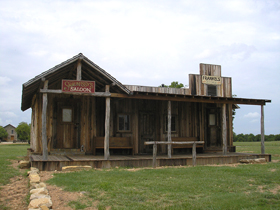
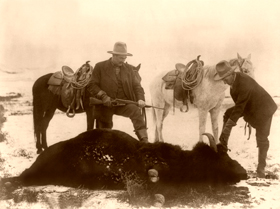
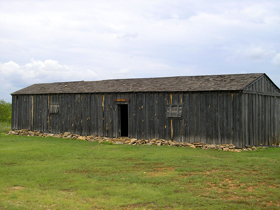
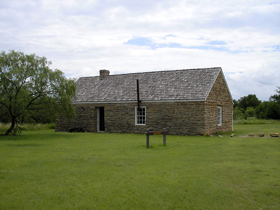
![images[4] images[4]](https://blogger.googleusercontent.com/img/b/R29vZ2xl/AVvXsEin0LkEMwKxNnHWfjLNF4WRlqHrCxkLe4gEUrL6S4fFynKU8mqheXWDn7OSa6g7CV0vBv3byO8f0pqeSompvoAHVVeE1VG5Jey604xnVDQqIPr1gGX_tgz0nrtPWi9hpOl4poQN1x7v044O/?imgmax=800)















No comments:
Post a Comment